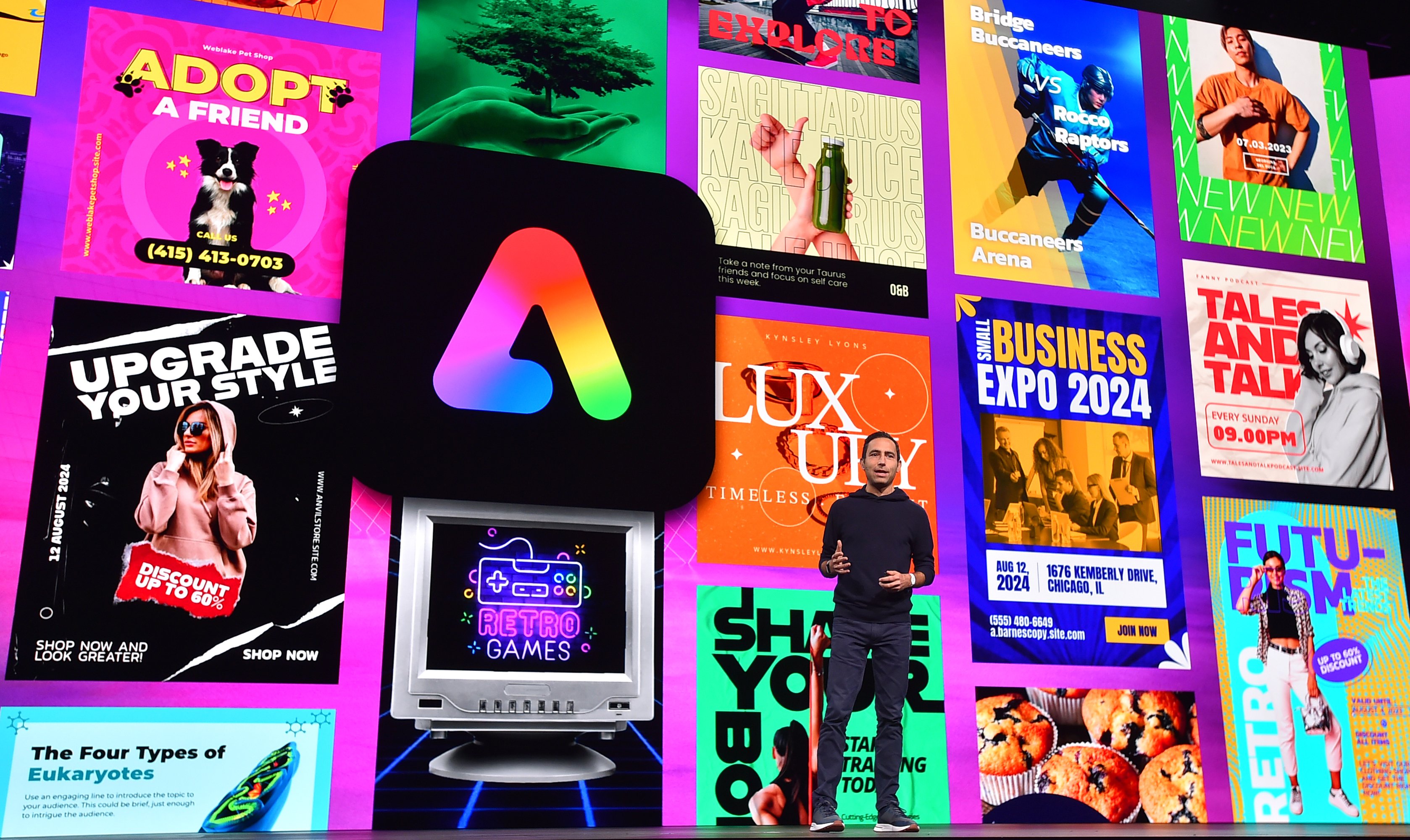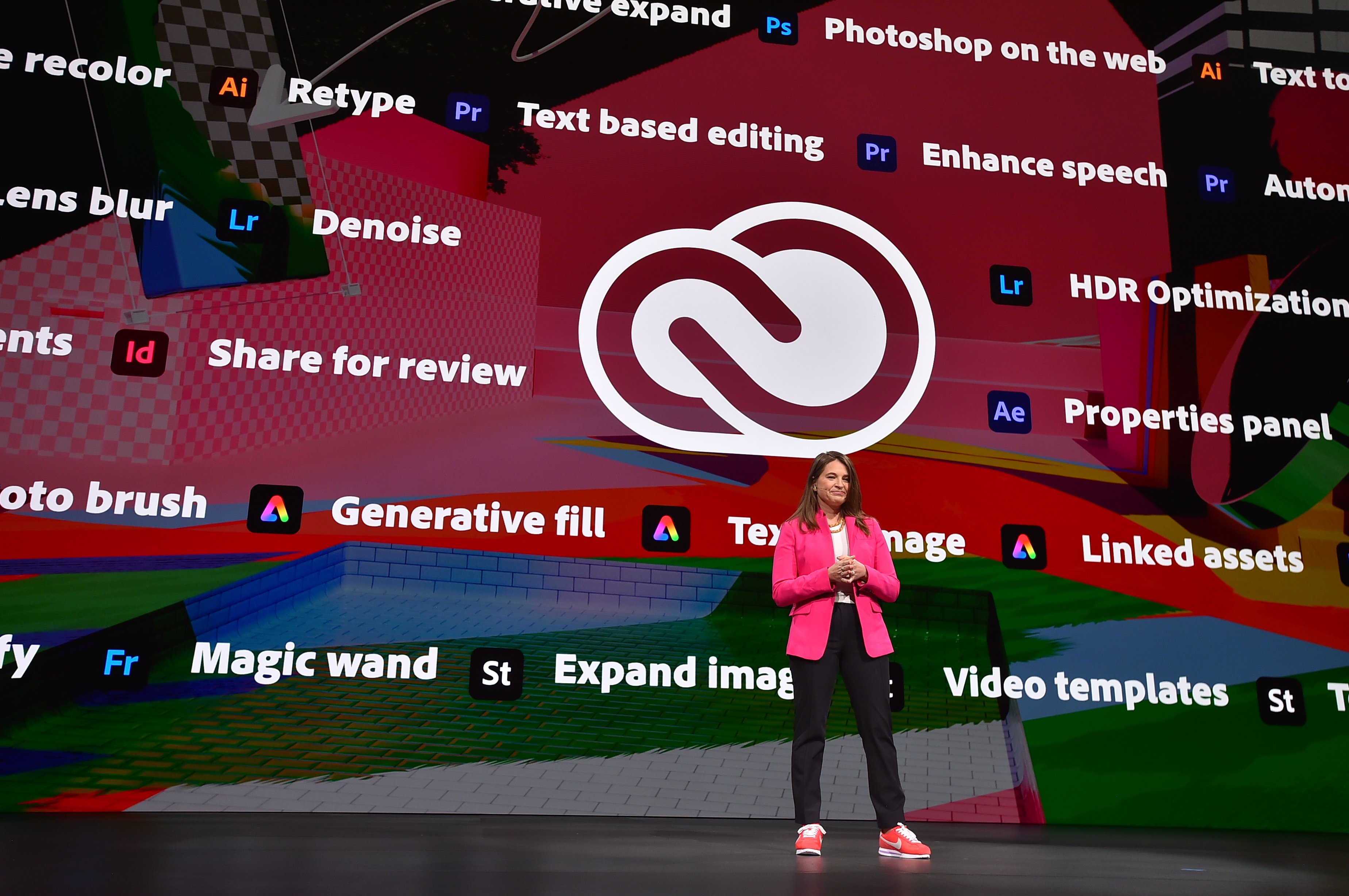There was a lot to like when Adobe (ADBE +0.72%) reported the results of its just-completed third quarter. The company again reported record results, with revenue that increased an impressive 24% year over year to $2.29 billion and diluted earnings per share of $1.34, up 60% compared to the prior-year quarter. These results easily exceeded Adobe's forecast, which was for revenue of $2.24 billion and earnings per share of $1.27, while also exceeding analysts' expectations.
During the conference call with analysts, Adobe executives provided additional color on the quarter and gave investors insight into the company's vision for continuing growth. Management discussed the integration of Magento, its increasing success with customers, and how partnering with Microsoft (MSFT 0.21%) is driving business.

Adobe CEO Shantanu Narayen at Adobe Summit 2018. Image source: Adobe.
$1.68 billion well spent?
One of the topics that came up repeatedly on the call was the recent $1.68 billion acquisition and integration of e-commerce platform Magento into Adobe's business. The company completed its acquisition of Magento in June and delivered its first integrated deployment of Adobe Experience Manager and Magento Commerce Cloud this quarter.
During prepared remarks, Adobe CFO John Murphy said: "Magento is off to a strong start and contributed subscription and services revenue of $27 million in Q3. Strength in demand ... and a smaller-than-anticipated writedown of deferred revenue contributed to this success." He went on to say that lower writedown would result in higher-than-anticipated revenue from the platform in the current quarter; the company now expects more than $30 million.
In answering an analyst's question, Adobe CEO Shantanu Narayen said, "From my point of view, what was really attractive about Magento in addition to this really closing the loop and making every experience shoppable, is the fact that they were the only player who had both B2B [business-to-business], as well as B2C [business-to-consumer], as well as digital goods and physical goods." He also sees Magento as a funnel that will bring new users into the Adobe ecosystem.
Attracting and retaining customers
Adobe sees a huge opportunity in new customer acquisition, and Murphy said the company continues to see a significant success in converting users from free trials to paying customers for its creative products. Said Narayen: "I would say that we're getting better and better at it as we understand how to tailor our offerings. I think the other thing that we've always talked about is the fact that we now have more offerings enables us to further attract new customers to the platform."
There's a multipronged strategy to keeping the customer base growing, and "retention, upsell, new customer acquisition, and conversion remain huge opportunities," according to Narayen. The company has also had growing success with "retention of users migrating from promotional to standard prices" as they see the value of Adobe's products and gladly pay the full price once the trial period is complete.
While Adobe doesn't disclose customer numbers, the 24% year-over-year revenue increase is evidence that the company's strategy is working.

Image source: Microsoft.
Strategic partners
Adobe's management seemed happy to talk up its partnership with Microsoft. Narayen said: "We're definitely seeing accelerated adoption as a result of our products having been delivered on Azure ... what we are seeing is people are standardizing on Azure increasingly as an infrastructure for their cloud-based solutions ... so the success is leading to larger deals. It's leading to higher close rates."
Narayen continued to trumpet the partnership in an interview on CNBC's Squawk Alley, addressing the advantages of artificial intelligence. "That's where the Adobe and Microsoft partnership is so valuable, because ... we think we are actually creating a brand-new category and industry, which is all about digital engagement and customer experience management," Narayen said. He went on to say that Microsoft's Azure cloud computing platform lets businesses "process the data at the pace they want," while Adobe helps companies "attract customers to the [Azure] platform and engage it."
The artificial intelligence ingrained in Azure's cloud computing is instrumental in helping customers analyze their data, and Adobe's creative offerings provide the means to help businesses better engage those customers with these newly discovered insights -- creating a win-win for both Microsoft and Adobe.
The common thread
Each of these topics points to the increasing number of opportunities that Adobe is exploiting. Whether it's by acquiring new capabilities, leveraging the strength of partners, or making the most of its existing customer base, Adobe is leaving no stone unturned to ensure that its impressive growth continues.







